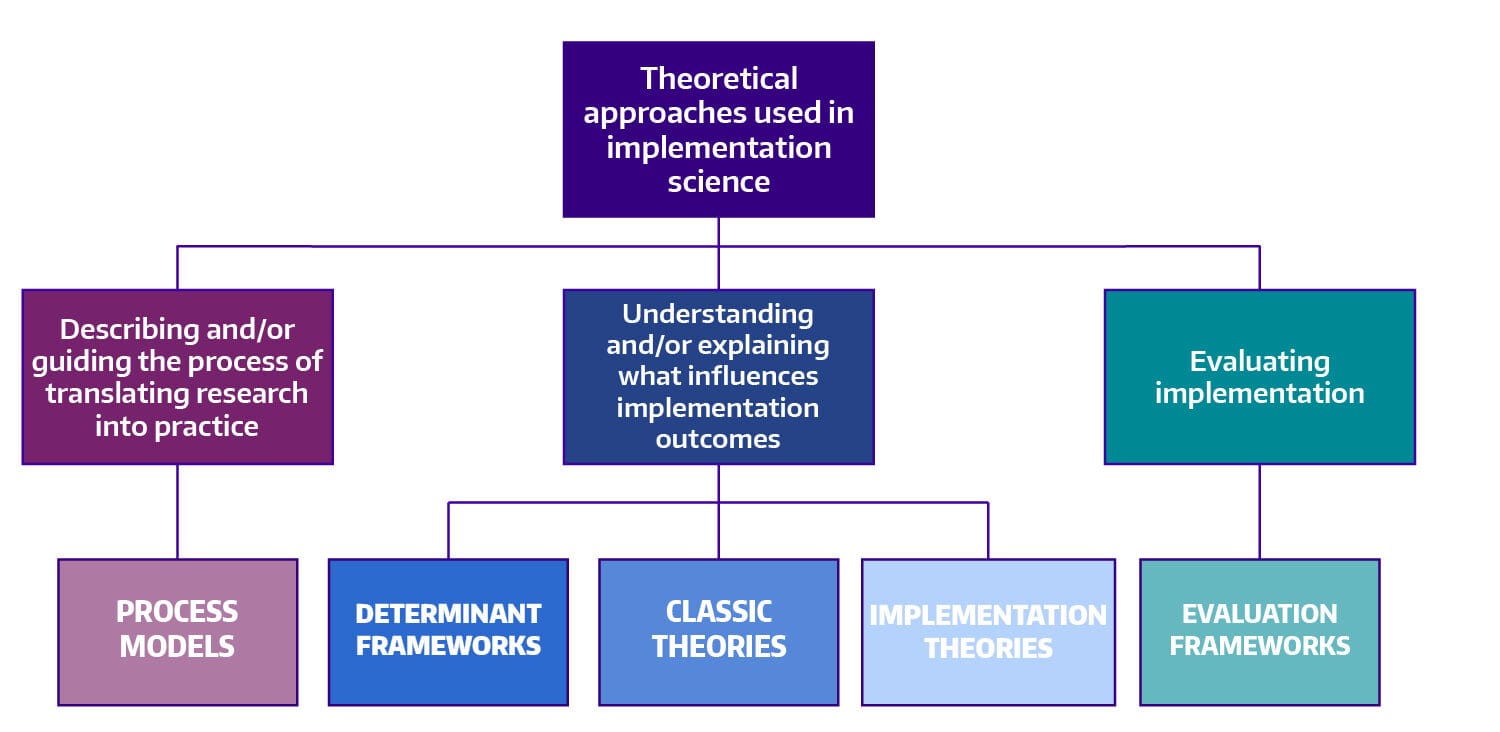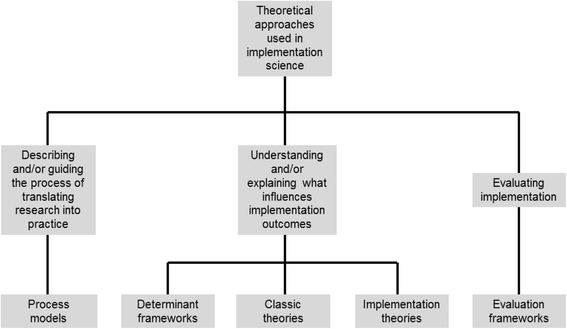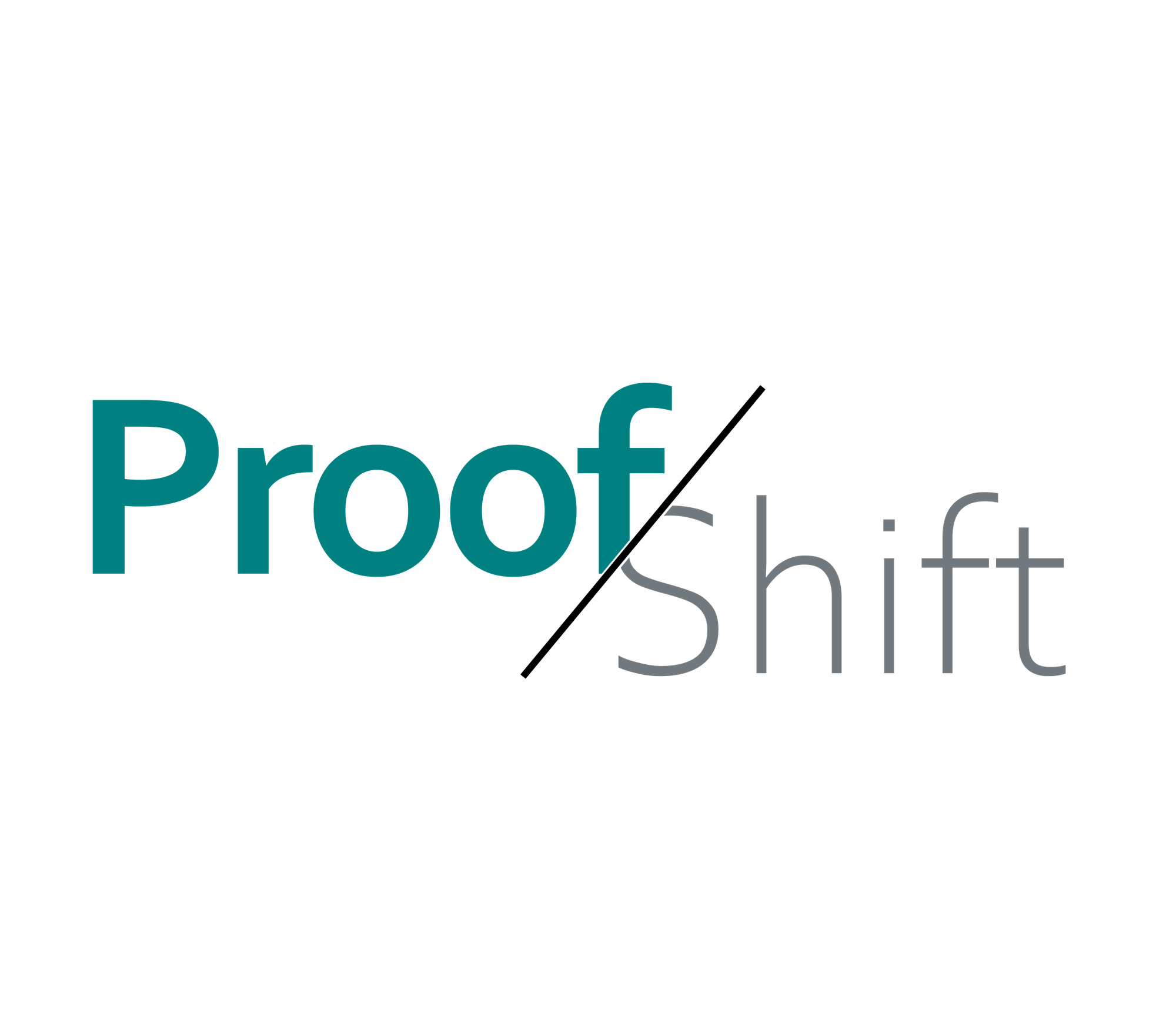Demystifying Theories, Models, and Frameworks

When we try to implement new interventions – whether it’s a mental health app, a classroom curriculum, or a community outreach program – we don’t just want to know what to do. We also need help figuring out how to do it, why it might work, and what factors will help or hinder success. That’s where theories, models, and frameworks (often shortened to TMFs) come in. TMFs give us a way to organize our thinking, plan our steps, and make sense of all the moving parts involved in putting research into practice. They don’t guarantee success, but they do help us ask better questions and make more informed decisions throughout the implementation process.
Like the Care Bears, different TMFs are good for helping us do different things; some are better for identifying barriers, others are more useful for mapping out timelines, and some help you evaluate outcomes. It can feel overwhelming at first, but understanding the basics of TMFs can make your implementation work more focused, effective, and evidence-informed.
What Are Theories, Models, and Frameworks?
In implementation science, these terms are often used together, but they have distinct roles (though you don’t need to stress too much about the differences right away):
- Theories explain why implementation succeeds or fails by helping us understand mechanisms of change
- Models provide step-by-step guidance on how to put research into practice
- Frameworks organize information, such as potential barriers or evaluation criteria
Using TMFs not only strengthens the rigor of your project but also helps ensure you’re asking the right questions, targeting key outcomes, and learning from what works (and what doesn’t). Whether planning, executing, or evaluating an intervention, TMFs are essential tools that improve your chances of success. That’s why nearly every implementation science project incorporates at least one theory, model, or framework.
Types of TMFs in Implementation Science
The most common way to sort theories, models, and frameworks is (somewhat confusingly) not by splitting them into those three categories, but in fact by sorting them into five categories, as explained in the paper “Making sense of implementation theories, models and frameworks” by Nilsen. That being said, some things can cover multiple categories, so don’t think of these as strict delineations.

1. Process Models: What do we do, and in what order?
These are the how-to guides of implementation. They describe the stages or steps involved in putting an intervention into practice, often moving from problem identification to evaluation and sustainability. These models are especially useful for planning implementation from start to finish.
Example: The EPIS Framework (Exploration, Preparation, Implementation, Sustainment) breaks implementation down into four key phases. Also, yes, it is the EPIS “Framework” but is actually a process model as well.
Use it when: You need a structured process to guide implementation planning and execution—like rolling out a new health education program across clinics.
2. Determinant Frameworks: What influences implementation success or failure?
Determinant frameworks help identify factors (or "determinants") that can help or hinder implementation. These include things like organizational culture, leadership, resources, and the characteristics of the intervention itself.
Example: The CFIR (Consolidated Framework for Implementation Research) includes five domains like inner setting, outer setting, and characteristics of individuals.
Use it when: You want to understand what might support or block implementation in a specific context, like introducing a telehealth service in a rural area.
3. Classic Theories: What established principles can help explain implementation?
These are theories borrowed from disciplines like psychology, sociology, or organizational studies. While not developed specifically for implementation science, they help explain behaviors and systems that affect implementation.
Example: Diffusion of Innovations Theory (which actually comes out of agricultural research!) explains how innovations spread through populations over time, including concepts like early adopters.
Use it when: You want to understand the broader social or behavioral dynamics that affect uptake, like why some teachers start using a new curriculum before others.
4. Implementation Theories: Why does implementation work (or not)?
These are theories developed specifically to understand implementation mechanisms. They aim to explain how and why implementation happens the way it does, often with a focus on individual or organizational behavior change.
Example: Normalization Process Theory (NPT) looks at how new practices become a regular part of everyday work. It focuses on things like whether people understand the change, how they work together to make it happen, and how they reflect on whether it’s working.
Use it when: You want to explore the deeper mechanisms behind change, like why a new electronic health record system is or isn’t becoming embedded in daily practice.
5. Evaluation Frameworks: How do we measure what happened?
Evaluation frameworks focus on how to assess implementation success. They help you decide what outcomes to measure and how to interpret results, not just in terms of the intervention’s effectiveness, but also how well it was implemented.
Example: RE-AIM stands for Reach, Effectiveness, Adoption, Implementation, and Maintenance. It’s used to evaluate both impact and sustainability.
Use it when: You need a structured approach to evaluate outcomes across multiple levels, like assessing a new physical activity program's uptake and impact across community centers.

Choosing the Right TMF
With so many theories, models, and frameworks out there, it can be tough to know which one to use. The key is to think about what you need help with. Are you planning the steps of implementation? Trying to understand why something isn’t working? Looking for a way to measure success? Different TMFs serve different purposes—some guide your process, others help you identify barriers, and some help you figure out what to measure. You don’t need to use more than one, but sometimes combining two (like a process model and an evaluation framework) can give you a fuller picture. The most important thing is to choose something that fits your question, your context, and your goals.
It’s also important to remember that TMFs aren’t one-size-fits-all. Real-world settings are complex and sometimes unpredictable, so it’s perfectly fine to adjust a theory, model, or framework to better match your project’s needs. This might mean focusing on certain elements more than others, combining parts of different TMFs, or adding new factors that are specific to your context. The goal is to make the TMF work for you, not the other way around. Just keep track of any changes you make and explain them clearly when you share your findings, so others can understand and learn from your approach.
Applying TMFs in Practice
Once you’ve chosen a TMF, the next step is putting it to work. TMFs can guide everything from designing your study or program to planning your implementation activities and evaluating how things go. For example, you might use a determinant framework like CFIR to identify potential barriers before you start. Then, you could follow a process model like EPIS to plan each phase of rolling out a new intervention.
Finally, you might use an evaluation framework such as RE-AIM to measure how well the program reached the target group, how faithfully it was delivered, and whether it’s being sustained over time. Keeping your chosen TMFs visible throughout your work helps you stay focused and ask the right questions at every stage. And don’t be afraid to revisit or adjust your TMFs as you learn from your experience in the field.
Learn More:
There are lots of resources out there to help you find TMFs for your project. Journal articles on implementation science often describe and compare popular TMFs. Online repositories like the Dissemination & Implementation Models database provide searchable collections of TMFs with summaries and references. You can also explore reviews or guides published by experts, which often recommend TMFs based on your specific goals or context. Finally, don’t underestimate the value of talking to colleagues or joining professional groups focused on implementation science, who can point you toward TMFs that have worked well in similar projects.
Sources:


